I’ve really enjoyed discovering more about bathing cultures across the world – in the UK, spas are expensive and not really an everyday activity, so finding that I could visit a lovely Soviet bath house in Almaty for around £8 or a luxury Korean jjimjilbang in Busan for around £13 was a bit of a revelation, and I had high hopes for the onsen of Japan. They didn’t disappoint. In fact, I’ve just counted and during our month in Japan, I had 16 baths in 12 different onsen. Not bad!
My top 3 onsen experiences
Before we came to Japan, I knew I wanted to visit at least one onsen, but I thought we might need to seek it out. Not so – they are EVERYWHERE! Technically, to qualify as an onsen, they should be filled from a natural hot spring source rather than artificially-heated water, but actually even this wasn’t as scarce as I’d expected (Japan being as seismically-active as it is), and most baths we visited were true onsen.
Onsen come in both private form (e.g. in a hotel or a ryokan) and public form (e.g. in an onsen town). They are mostly sex-segregated and fully nude, but not all. Some are indoor, some are outdoor (known as rotemburo), and many offer both indoor and outdoor bathing. Some pools are made of roughly hewn rock, whereas others are made of smooth cypress wood. There are even some onsen that are on beaches or in rivers that have little-to-no infrastructure surrounding them and are totally free to visit (such as Mizunashi Kaihin in Hokkaido) – in short, there’s something for everyone.
Best Rotemburo: Ganiba Onsen
We took a 500 km day trip on the Shinkansen to reach Ganiba Onsen, set in a ryokan in the small mountain village of Nyūtō Onsen. Admittedly it was rather a long way to travel to take a bath and it wasn’t fancy (in fact, the facilities inside were pretty basic and the outside changing room was literally frozen!) but bathing in the forest while surrounded by deep snow drifts was positively magical.
Best hotel onsen: Dormy Inn, Shimonoseki
Actually, we stayed in several hotels that had really lovely, modern rooftop onsen with views over their respective cities, but this was the first and was a really pleasant surprise. It felt like a very worthy consolation prize when our ferry from South Korea had been cancelled and we found ourselves arriving in Japan a day late and in a different city than originally planned!
Best novelty bath: Saraku sand baths
This one was mostly memorable because it followed the frankly bizarre but lovely experience of being buried in hot volcanic sand on a rainy beach! Oli says he got over his fear of public (well, onsen-based) nudity here, although he promises not to take advantage of this newfound freedom too often when we return to the UK.
Etiquette (i.e. How not to scare your fellow bathers)
Step 1: Don’t have a tattoo
Ok, I appreciate the ship might have sailed for some people on this! But fortunately for me, I don’t have any tattoos so this step was easy. In Japan, tattoos have a strong association with members of organised crime syndicates and so they tend not to be welcome in onsen, since it is presumably less risky for staff to ban all tattoos than to tell members of the yakuza that they can’t come in. I assume that no one genuinely believes that a tourist with a heart on their hip or a butterfly on their bum really has anything to do with the yakuza, but it’s difficult to tell – it’s hard to read the subtext when you can’t even read the text. In any case, I’ve read that making an effort to cover a tattoo (e.g. with a bandage) is normally enough, or there are some onsen towns (including Kinosaki Onsen, where we visited) that are happy for people with tattoos to enter.
Step 2: Remove your shoes
This is very important! Sometimes there are lockers, sometimes there are shoe racks, but either way, your shoes (or slippers, if you’re already inside a hotel) come off before you enter the building, pay, or do anything else. Don’t do as Katie did (inadvertently) and leave your shoes on for even a moment too long. The horrified reaction was honestly like she’d killed a kitten for fun.
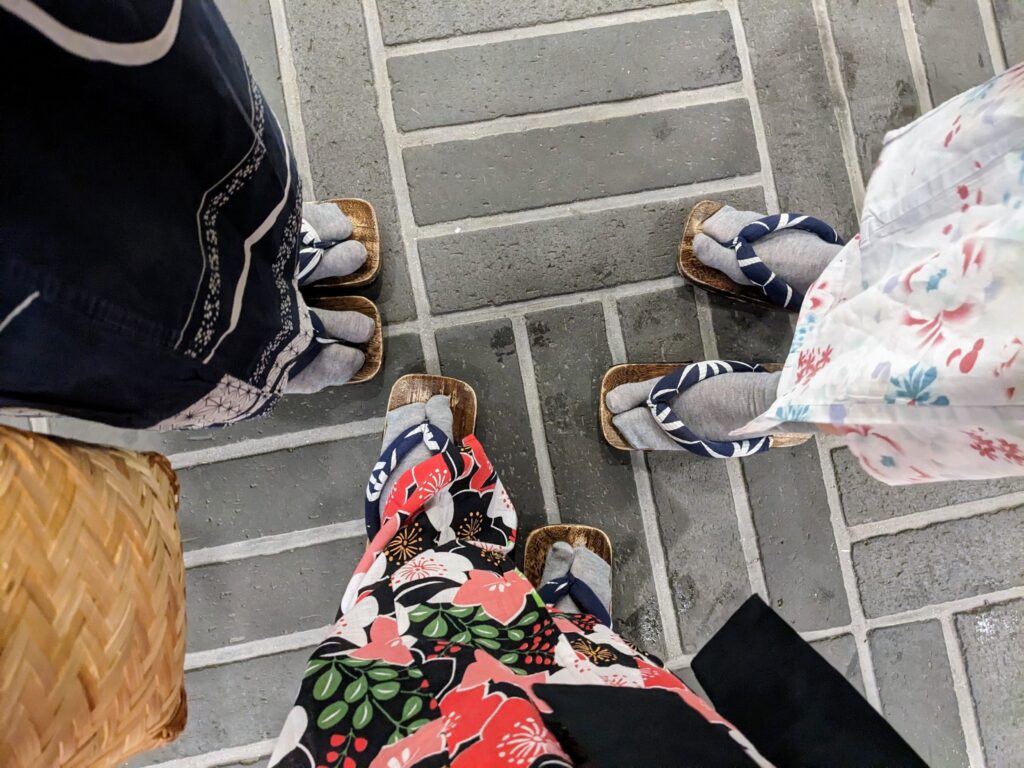
Step 3: Get dressed up in your birthday suit
Most onsen require you to be naked, but apparently not all – there are some mixed outdoor onsen where women can wear swimwear or more commonly a yuami-gi (bathing dress). Perhaps it says all that is needed about attitudes towards gender in Japan that this isn’t deemed to be necessary for men – from what I read, women covering up in mixed-sex baths is sometimes seen as necessary to avoid staring, but the same doesn’t apply for men. In fact, men aren’t even allowed to cover up. So self-conscious men need not apply!
Anyway, I didn’t visit any baths where people covered up – in fact, I read that to do so might give people the impression you are trying to hide a disease 😬 So, in short, Step 3 normally involves popping all your clothes into a locker in the changing rooms before entering the baths. This is also the moment to remove your face mask (which are still widely worn in Japan) – or as I like to think of it, “no knickers, no mask”. Do with that motto what you will! You should also leave your big towel in your locker and only take the small towel into the baths.
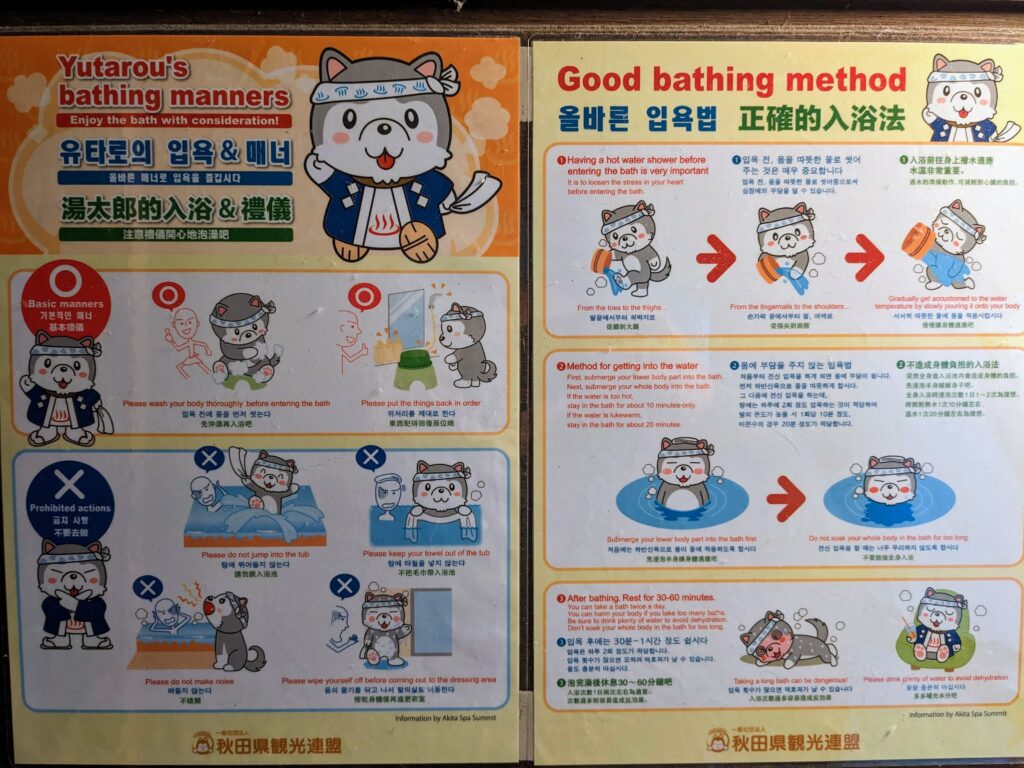
Step 4: Wash wash wash
This is an easy bit – basically take a pre-bath shower so that you are clean before going into the shared water. But just to keep you on your toes, the showers aren’t the stand-up affairs you might have in mind, but are normally taken perching on a low stool. There’s usually free shampoo, conditioner and shower gel, and sometimes also things like facial cleansers. These were often quite nice products even in otherwise no-frills onsen. Just try not to slither off the slippery stool and onto the floor once lathered up with soap suds!
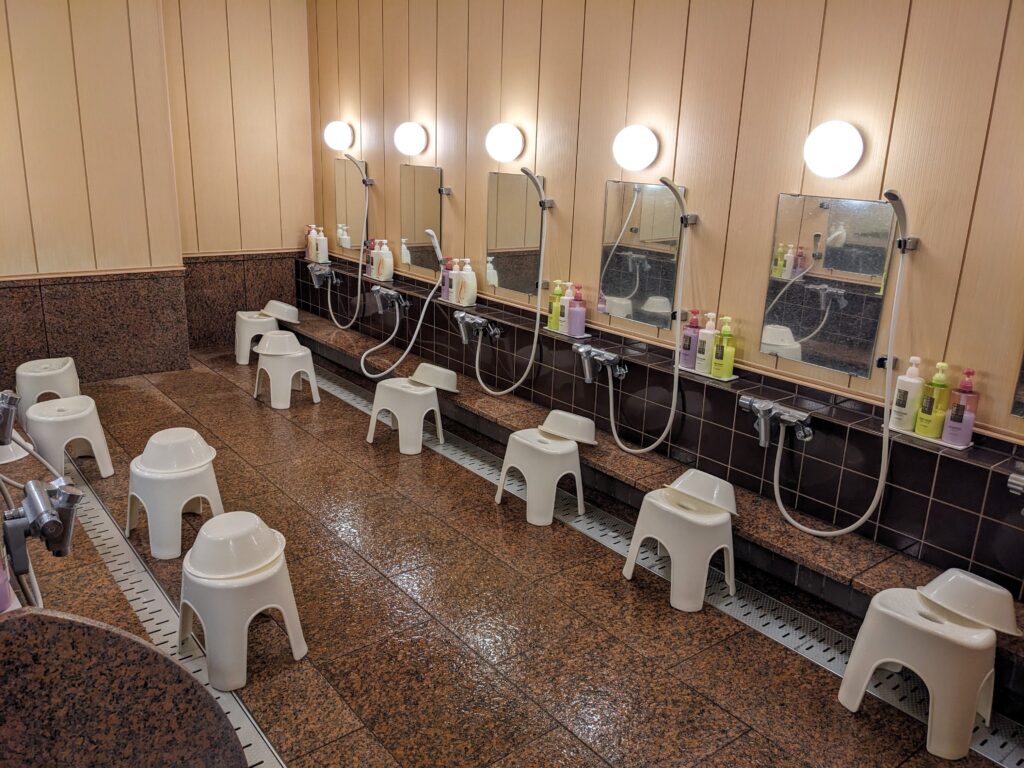
Some places also encouraged you to splash yourself with water from a jug before climbing into the baths, in order to get accustomed to the temperature (they varied, but some baths were seriously hot!)
Step 5: Time to soak
Ok finally, it’s time to actually take a bath. Hair, towels, or anything other than your now-clean body are not welcome in the water for hygiene reasons, so you need to find somewhere to put your small towel, since there are normally no hooks or shelves in the bath. There’s an easy solution – just perch it on your head! I tended to twist mine into a turban (which had the added benefit of keeping my hair out of the way), but most people really do just fold the towel neatly and balance it on the top of their head!
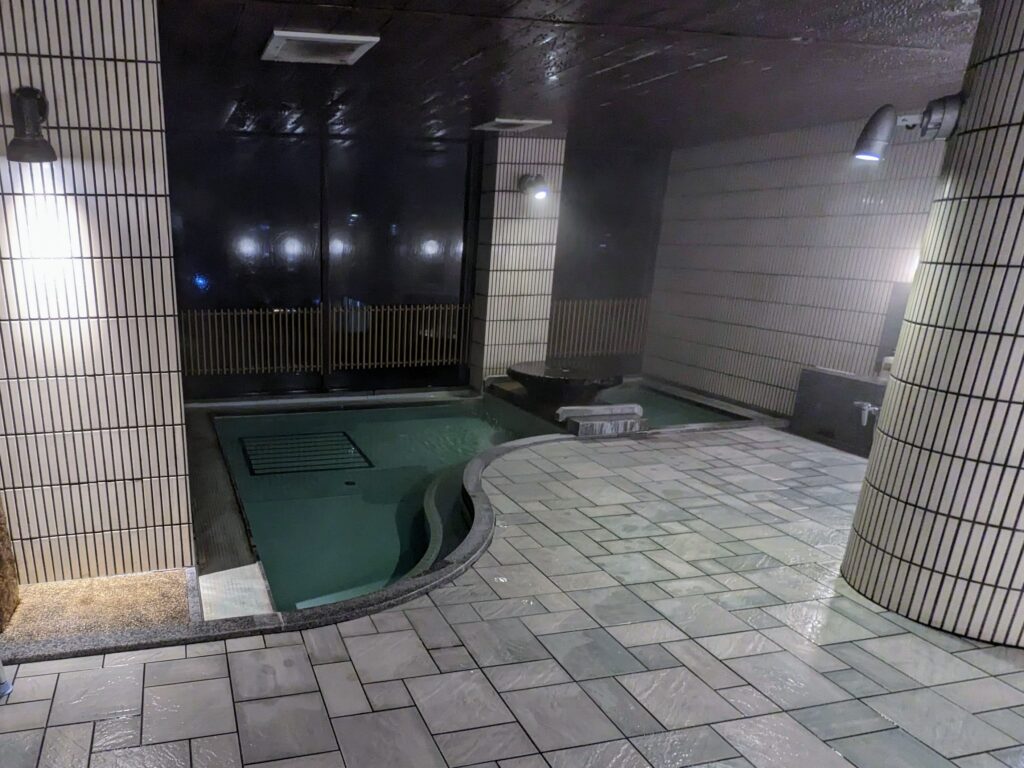
Step 6: Dry with your small towel
Now it’s your small towel’s big moment. Before going back into the changing room, you need to dry off with your small towel, as bringing any drips into the changing room is frowned upon. Quite why this can’t be done with your big towel is still a bit of a mystery to me, but it’s just not the thing to do. Once you’re dry, you can then re-enter the changing room, where your big towel awaits but is now pretty much superfluous.
Step 7: Enjoy the powder room
Once dry and dressed (perhaps in your yukata), there are rows of stools in front of sinks and mirrors to dry your hair and complete your beauty routine. Some onsen had pretty extensive ranges of free products available, and I’m reliably informed by Oli that the men’s powder rooms were just as well-equipped with beauty products. Nice to see some gender equality there, at least! His hair was quite long while we were in Japan, and he kept emerging from the baths with some alarmingly gravity-defying hair styles, having got quite into blowdrying his hair.
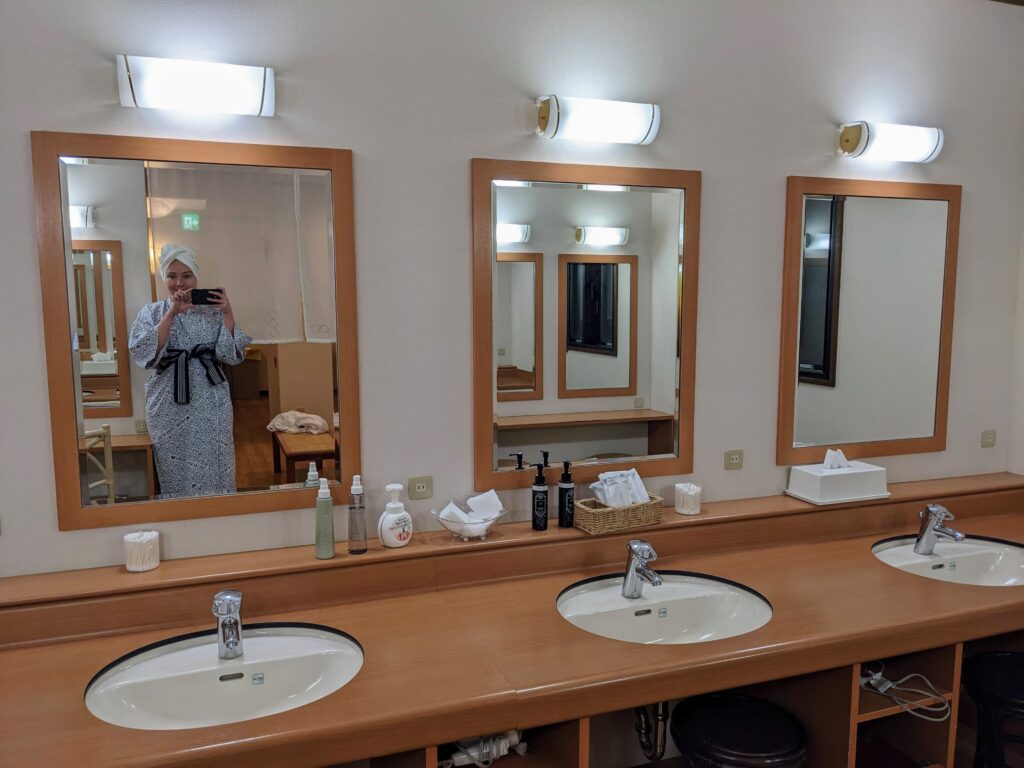
I found it pretty interesting to observe that Japanese women really do visit the onsen to wash and get ready for the day – it’s not at all a novelty ‘spa’ experience. So, in the mornings, the powder rooms of hotel onsen tended to be busy with women who were travelling for business in their work attire doing their hair and makeup. I also joined in and did the same (without the ‘going to work’ part) – in many of the places we stayed, I didn’t even use our private bathroom!
As you can probably tell, I’m a massive convert to the onsen way of life, and I can’t wait to try out more bathing experiences elsewhere in the world.
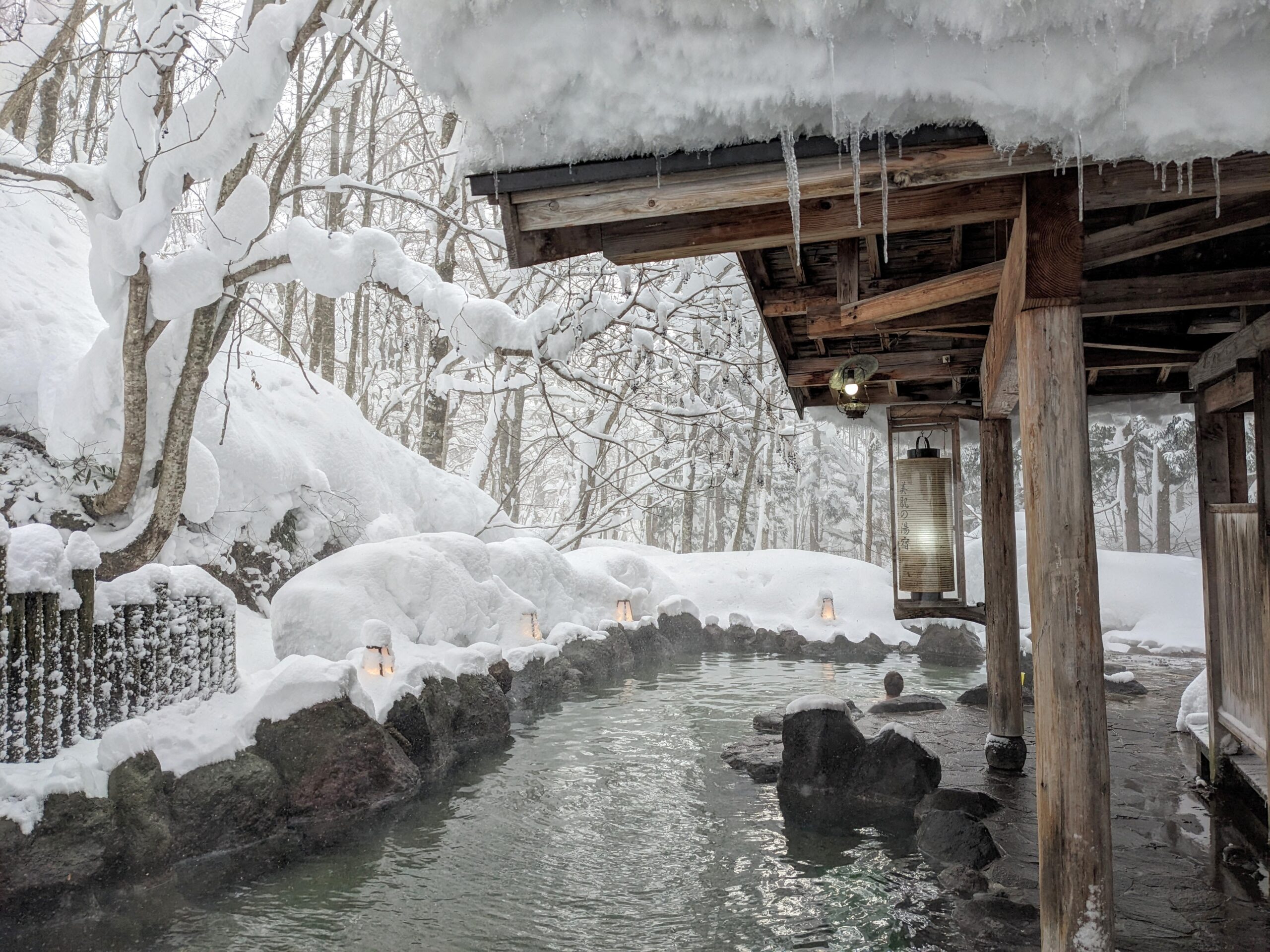
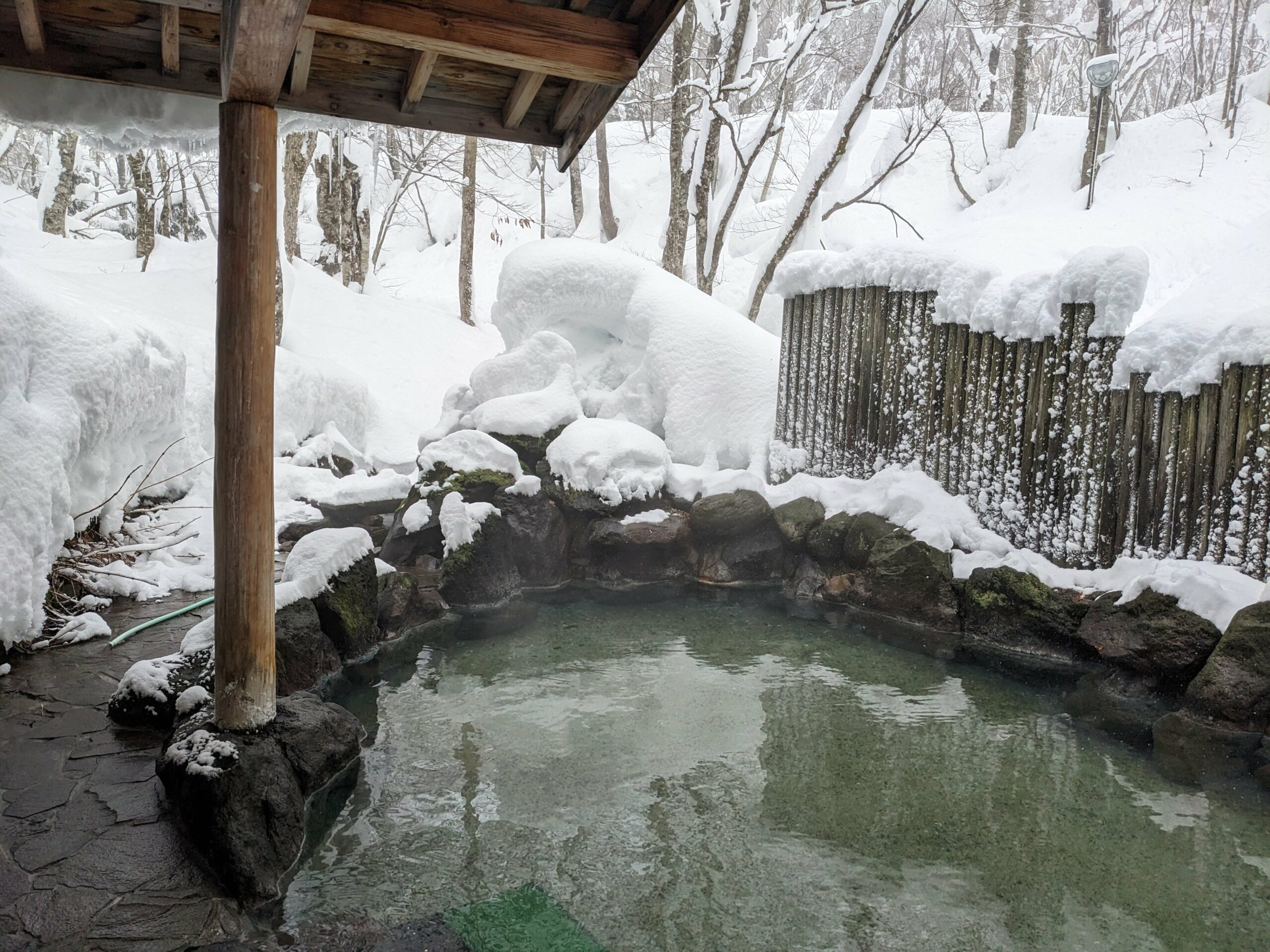
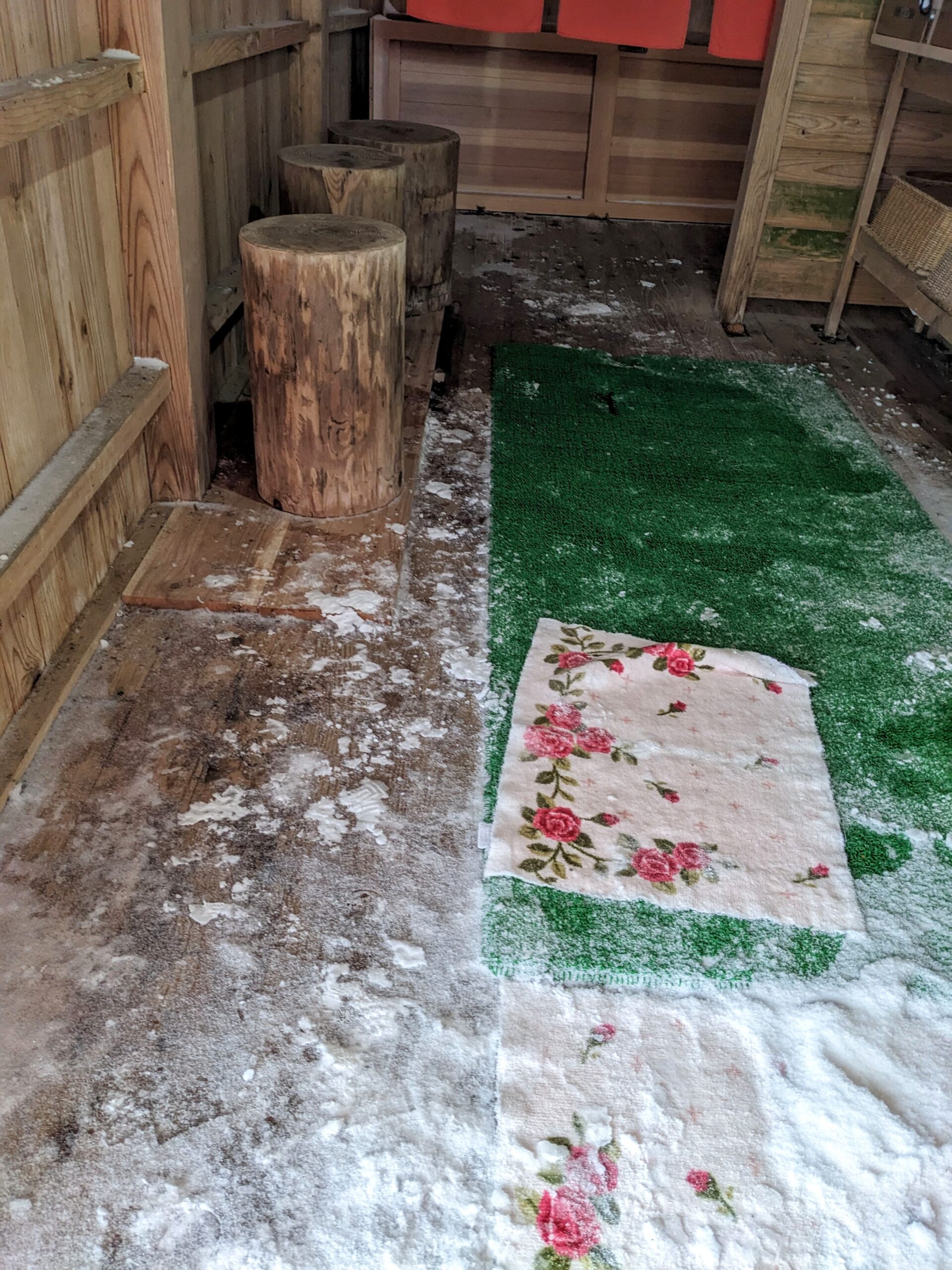
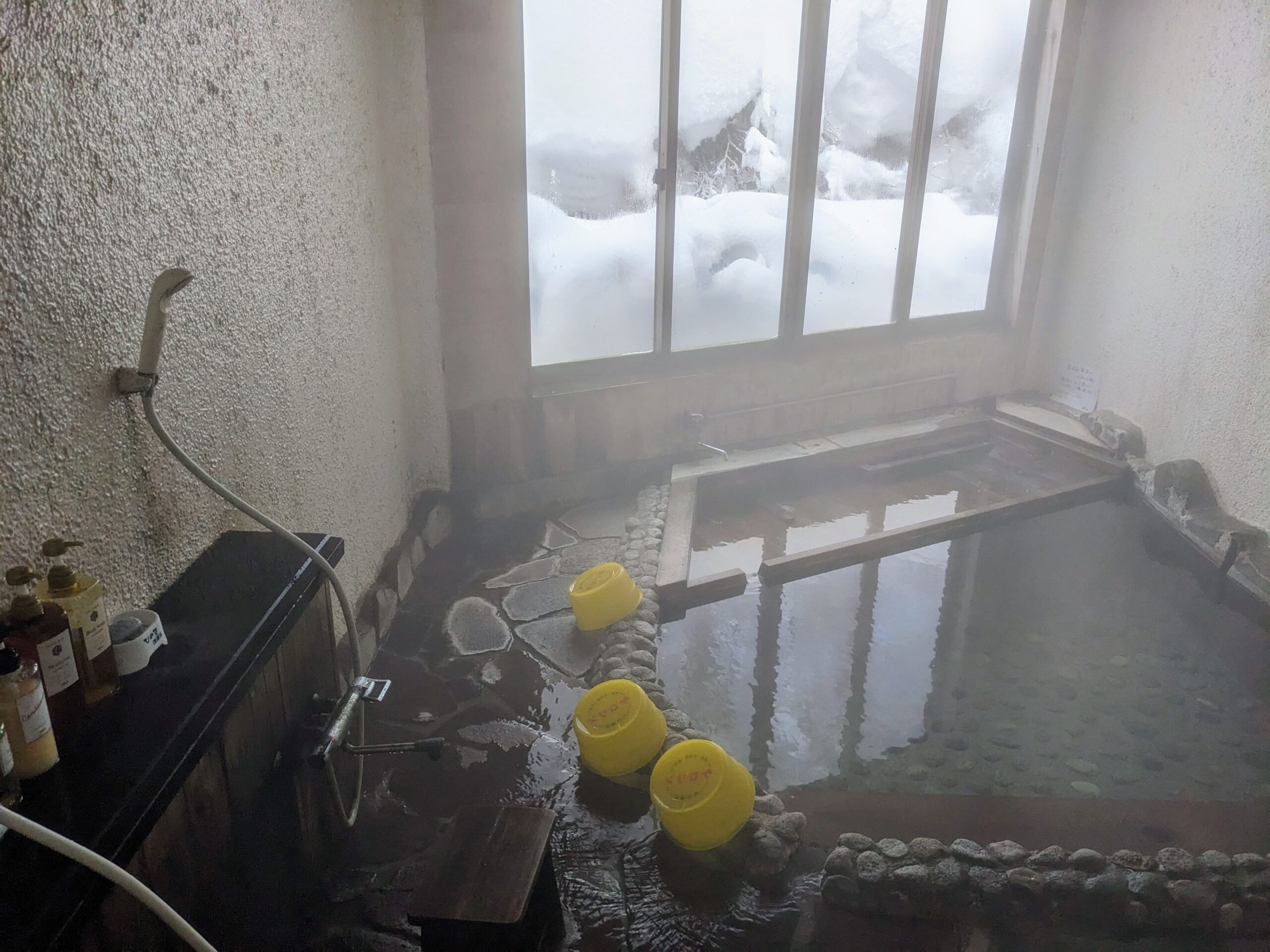
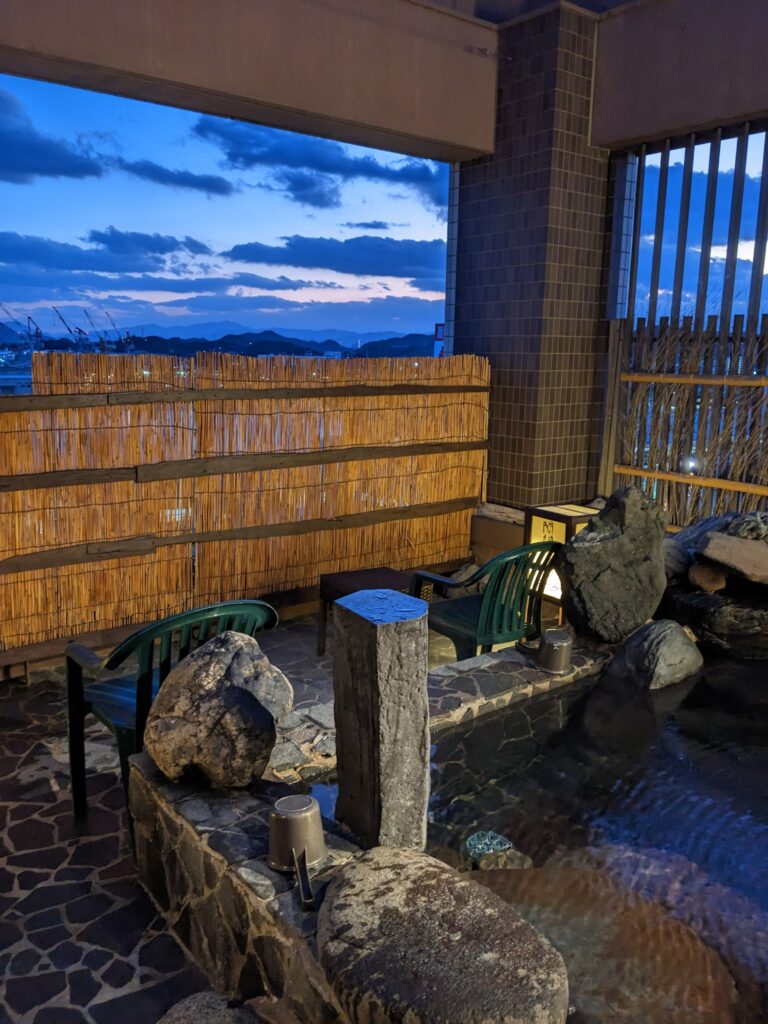
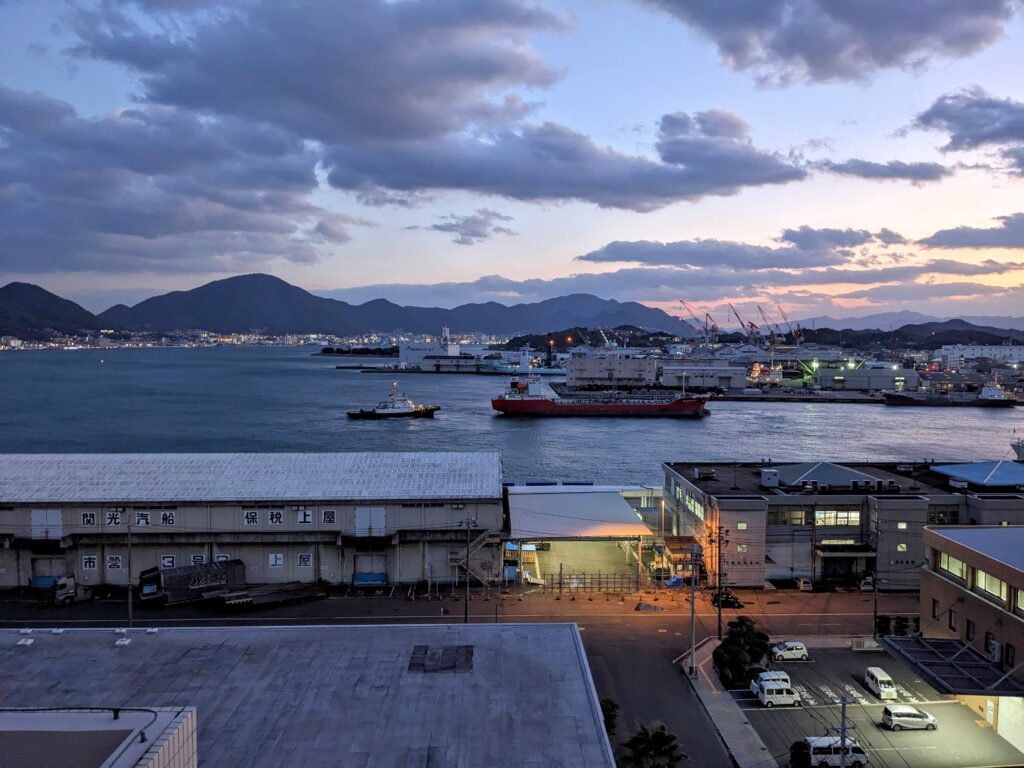
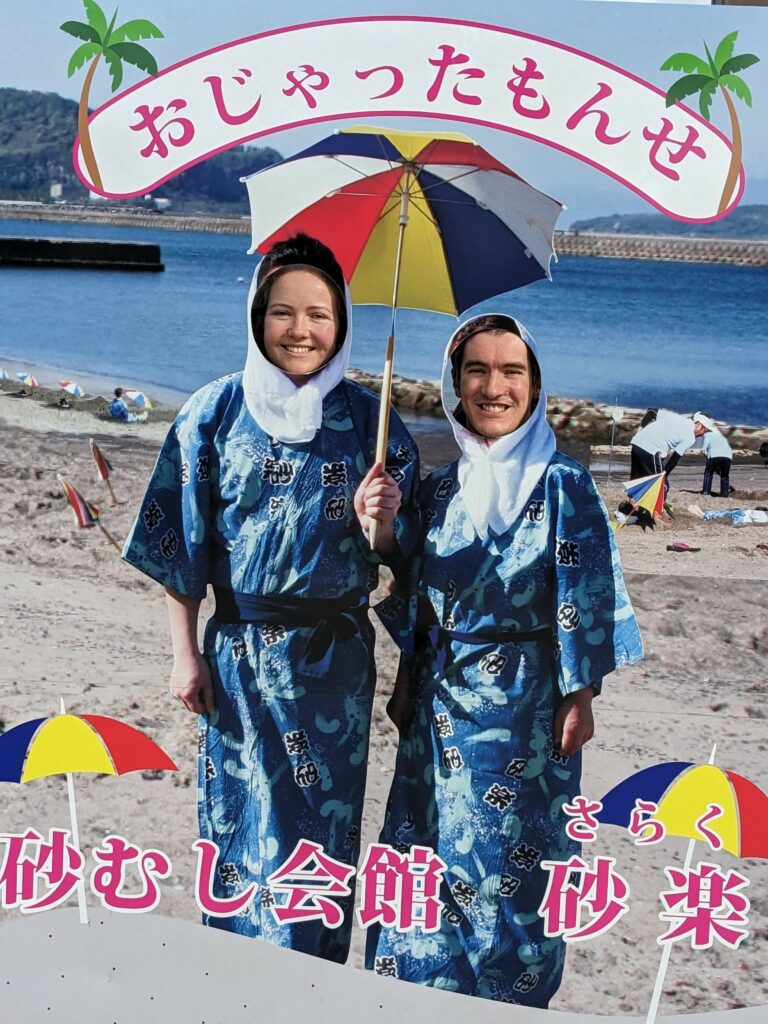
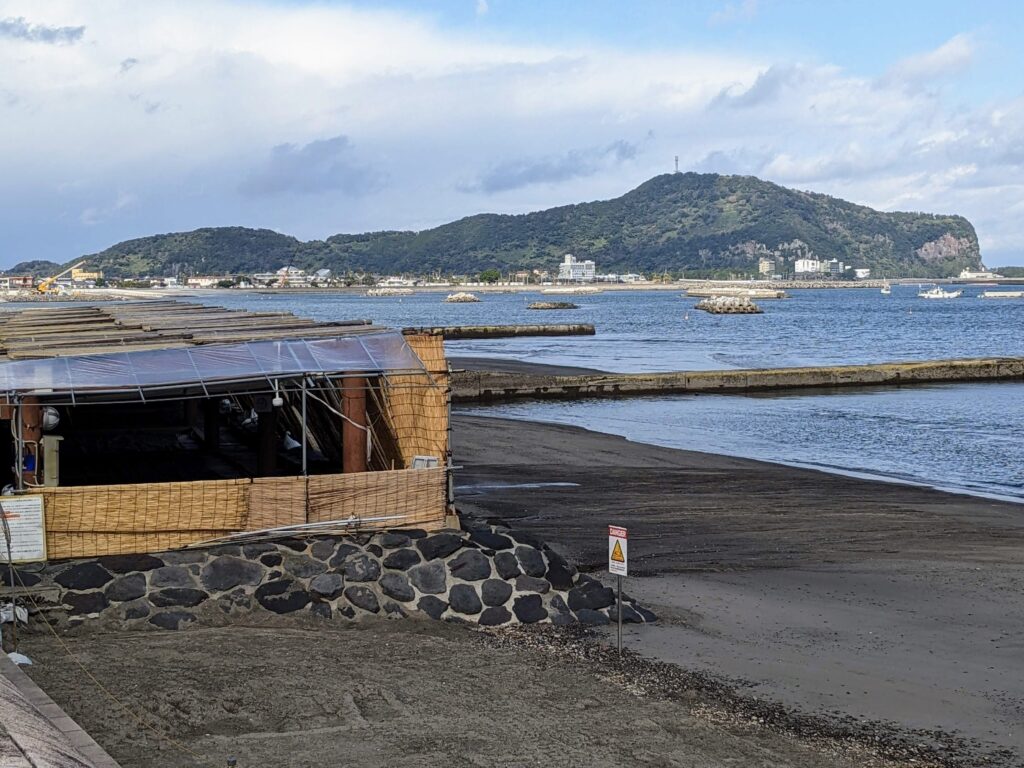
Sara- You’ll get washed away! Prepare to come home whiter & slimmer than you were before you left UK!